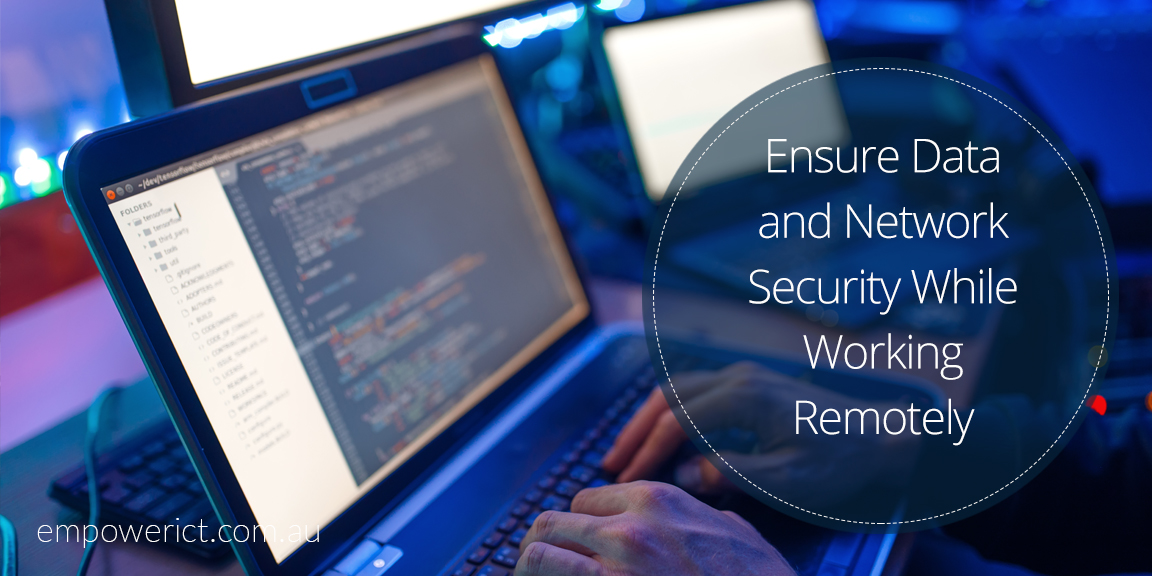In the initial phase of COVID-19, businesses faced the biggest challenge of the times, which was to keep organisations up and running. With various restrictions, social distancing and dipping economies across the globe, the only way to sustain was going online. Businesses also had to come up with work from home policies that enabled their employees and top executives to work from the safety of their homes. Although it started as a mode of keeping the organisation alive and sustaining the tough times, such style of work has quickly become the new work culture that is being supported by both organisations and employees.
With many benefits of working from home, there are also potential risks that can jeopardise the security of your network and data. Therefore, organisations must be aware of cybersecurity risks when working from home.
Failure to Cover Basics of Cybersecurity
Attackers and cybercriminals often exploit loopholes in the fundamentals of cybersecurity. Outdated patch levels, not performing regular network security audits/LAN audits, relying too much on traditional security measures like antiviruses, and not using data and network encryption are some of the common lapses that hackers exploit to enter into a business’s communication network. Therefore, businesses have to be mindful of the security measures that they’ve opted for and how often they check them for vulnerabilities.
Once hackers have successfully breached network security, they can easily either steal or corrupt the data or information that is being communicated on a daily basis. Therefore, the threat to cybersecurity of the connected networks (employees working from home) becomes even more severe.
A Lack of Understanding of Corporate Cybersecurity
Businesses often do not understand the potential value of their critical assets in the world of cybercrime and how creative cybercriminals can be when they are committed to planning and executing a cyberattack on a target organisation. A report published by Ponemon Institute in 2015 suggests how businesses fail to manage their cybersecurity, and the data and analysis published in the report is relevant to this day.
According to the report:
| Issues | Rate of Occurrence |
| Cyber Threats and Incidents | 8.21% |
| Data Breach | 7.99% |
| Branded Exploits against Customers and the Public | 6.78% |
| Compliance/Regulatory Incidents | 6.24% |
| Phishing/Social Engineering Attacks | 5.03% |
| Denial of Service | 4.11% |
| Hactivism/Activism/Physical Threats | 3.42% |
| Domain-Based Threats/Cyberattack Infrastructure Creation | 2.32% |
| Executive Threats/Impersonations | 1.91% |
Apart from that, decision-makers often confuse compliance with cybersecurity and they think ensuring compliance with company laws and regulatory guidelines guarantees their online security, but these are different concepts altogether.
Lacking a Cybersecurity Policy
This is another aspect of not having a fair understating of corporate cybersecurity. A cybersecurity policy is quite essential if businesses want to protect their communications and data, especially in the modern-day scenario where work from home has become the norm. Not having a cybersecurity policy and letting employees and high-level executives engage in affairs that concern cybersecurity could be a more significant threat to an organisation than a threat from an external cybercriminal. In such matters, a cybersecurity consulting firm can be of great help as they help businesses in forming a cybersecurity policy along with providing comprehensive managed cybersecurity services. The essential elements of a cybersecurity policy should be:
- Identify potential risks associated with cybersecurity and address risks associated with remote access to client information and fund transfer activities
- Define and handle risks associated with vendors and other third parties
- Form and establish cybersecurity infrastructure and governance
- Create policies, procedures and oversight processes
- Implementing protective measures to protect networks/remote networks (employee communication when working from home) and information
Human Error/Breach
A carbon lifeform is the weakest link to an organisation’s cybersecurity. In fact, managing and maintaining online security throughout the organisation requires a thorough enterprise risk management approach. This is because the data flows through many data points that are usually located in remote locations. In such a situation, the probability of human error or intentionally performing a security breach becomes high. Abuse of privilege or authority, data mishandling, using unapproved hardware/software, misuse of knowledge, etc. are some crucial aspects that security aspects cannot ignore in work from home scenario.
Cyberattacks in previous years have raised concerns across the globe and business organisations have become quite worried about their online security. And their concerns have raised even more considering today’s scenario where employees and top-level executives prefer to work from home. Protecting connected networks and data across all touchpoints has become a top priority for organisations as it is already hard to thoroughly monitor the online activities of employees who are working from home. Therefore, organisations must consult cybersecurity consultants and service providers that offer managed cybersecurity services.
Speaking of cybersecurity services, Empower ICT offers mobile security services, regular LAN, email security and network audits to protect and help you understand your entire network infrastructure, including security vulnerabilities.
Source Link : Why Do Leading Enterprises Seek Out Hosted PABX?

